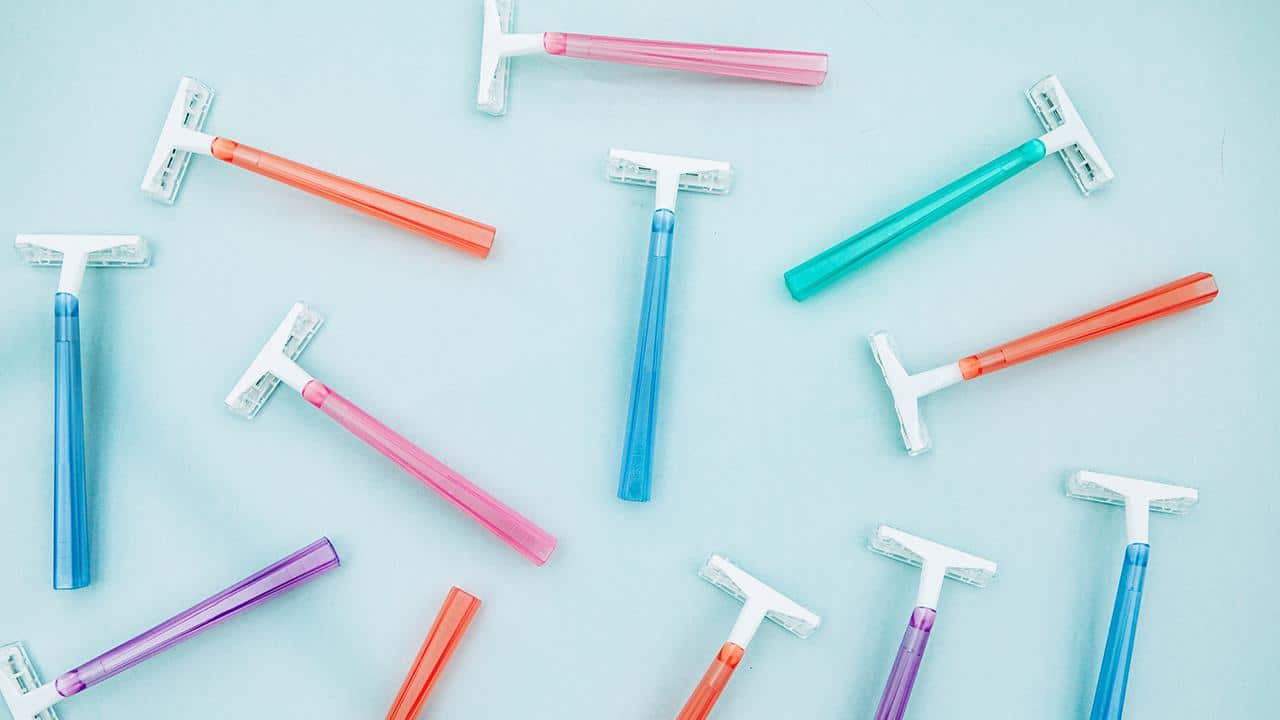

Carol Yepes / Moment / Getty Images
Although it’s convenient, single-waste plastic is plaguing our planet. Thankfully, some people are looking to reduce their plastic consumption. If you’re one of them, you may face a crossroads with the complicated plastic razor.
Though not categorized as “single-use,” billions of plastic razors end up in landfills each year. Razors are sharp objects that can’t be recycled because they’re made from mixed materials. A standard disposable plastic razor is good for three to 10 shaves before it gets blunt, and clogged — then off to the landfill, it goes. Additionally, constantly purchasing new razors means more waste created from plastic and cardboard packaging.
Around 2 billion pounds of disposable razors were trashed in America in the 1990s.
Still, the product is a part of many people’s grooming routine, putting the razors in a cycle of buy, use, throw away, repeat — each razor unrecyclable.
Recycling Razors: The Exception
Though generally unrecyclable, there are a few exceptions when it comes to razors. However, the few options available aren’t widely used or accessible.
BIC, a French, mainstream razor company, started an unsuccessful recycling program a few years ago in France.
In the U.S., Gillette attempted a similar idea in partnership with Terracycle, an organization that helps with odd and hard-to-recycle waste. However, the program can be impractical, since as of 2019 there were only 200 recycling centers. And, for those who don’t live near a recycling drop-off, if you choose to mail Terreacycle your old razors, the shipping cost is on you.
“In order to send it through your curbside or municipal recycling program, the logistics and processing of the razors is actually more than the value of the material for the processing facilities,” Darby Hoover, senior resource specialist of food and agriculture at the Natural Resources Defense Council, said to HuffPost. “They can’t make a profit from it, so it’s deemed non-recyclable.”
With limited recycling options, it can be helpful to look for alternatives to the standard, plastic disposable razor.
Eco-Friendly Options
In 2020, 158.10 million people in the U.S. used disposable razors — that number is supposed to increase to 160.16 million by 2024.
Looking into sustainable alternatives, such as metal, brass, and bamboo razors can help minimize the amount of plastic ending up in landfills.
Safety Razors
A typically metal alternative called a safety razor, or a double-edged razor, is a good option for those who want to ditch their plastic razors. It uses a double-edged blade so the razor is versatile and can be used on both sides. Most safety razors are made from either brass or stainless steel.
Safety razors, once you get the hang of it, are relatively easy to use. They offer a closer shave than disposable razors and are easier on the skin.
The only part of a safety razor that needs to be disposed of is the blade. Many people who routinely use safety razors keep their used blades in a jar or “bank” to take to scrap recycling plants later.
Each part of the country has its own policies when it comes to recycling. Be sure to check where certain materials are accepted in your area.
Reusable Razors
If you’re nervous about making the switch to a heavy-duty razor, there are other alternatives to plastic razors. There are razors that shave just like your disposable one, but they’re made from recycled plastic. Preserve makes a good eco-friendly razor, for a reasonable price. Preserve will also take back your used razor handle for proper recycling, according to HuffPost. Gillette sells a reusable razor made from recycled bottles, and the packaging is also made from 85% recycled plastic.
There are other razors made from recycled or biodegradable materials other than plastic.
If you’re not into safety razors and prefer a multi-bladed razor that’ll last you a long time, there are metal razors that will do the same thing as your disposable razor, without the waste.
The Leaf Shave makes a kit with a three-blade razor for those looking to change their shaving routine to be zero-waste.
Eco-Friendly Disposable Razors
For those who don’t want to part with their disposable razors, Ak Hippy Chic makes an eco-friendly, disposable razor. This product is better for Earth than your plastic one, because it’s made from a wheat straw handle, and shaves with stainless steel blades.
“I think we have to look at that as part of the overall culture and crisis of disposable plastic items. We keep making more and more things from plastic, which is a nonrenewable fossil fuel-derived material, and then we keep using these things once and throwing them in a landfill,” Hoover said. “It’s ludicrous and outdated at this point to continue to use this nonrenewable fossil fuel-derived material to make products that are used once and thrown away.”
In general, being more aware of your consumption, and limiting and substituting products, like your razor, when you can, can make a big difference.
Audrey Nakagawa is the content creator intern at EcoWatch. She is a senior at James Madison University studying Media, Art, and Design, with a concentration in journalism. She’s a reporter for The Breeze in the culture section and writes features on Harrisonburg artists, album reviews, and topics related to mental health and the environment. She was also a contributor for Virginia Reports where she reported on the impact that COVID-19 had on college students.
- Did You Know There's Plastic in Most Chewing Gum? - EcoWatch
- Ocean Plastic: What You Need to Know - EcoWatch

 233k
233k  41k
41k  Subscribe
Subscribe 